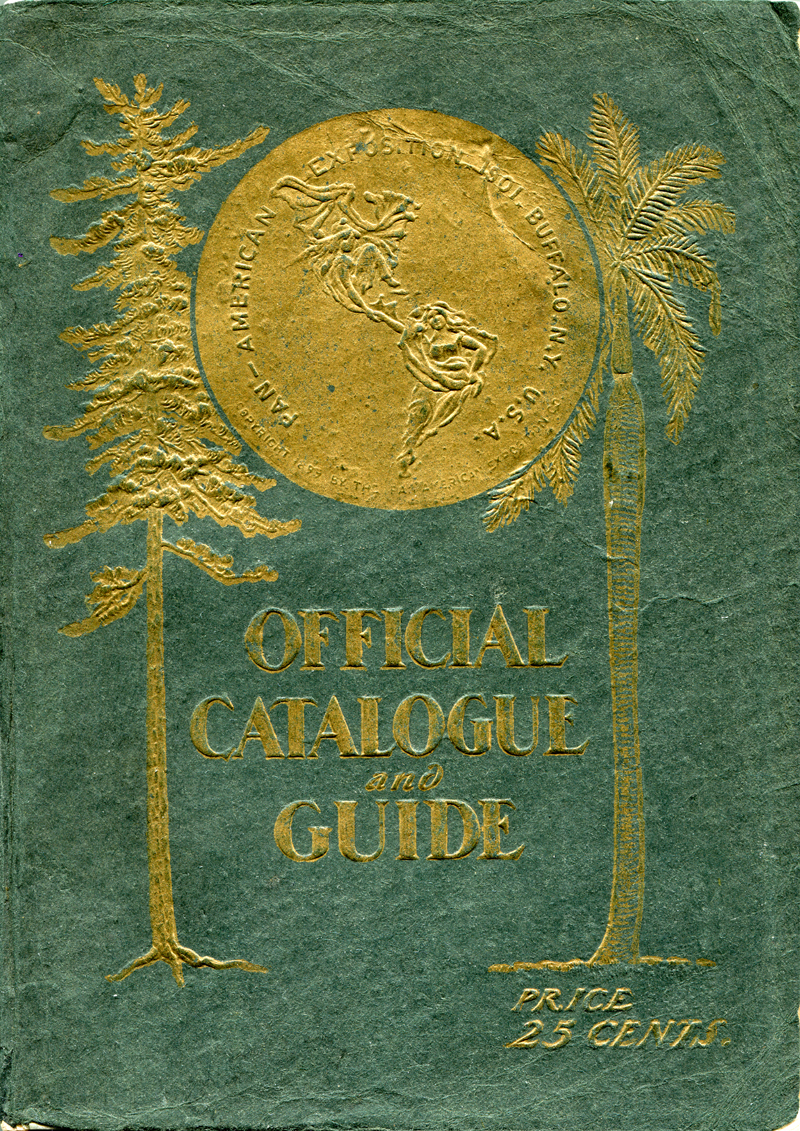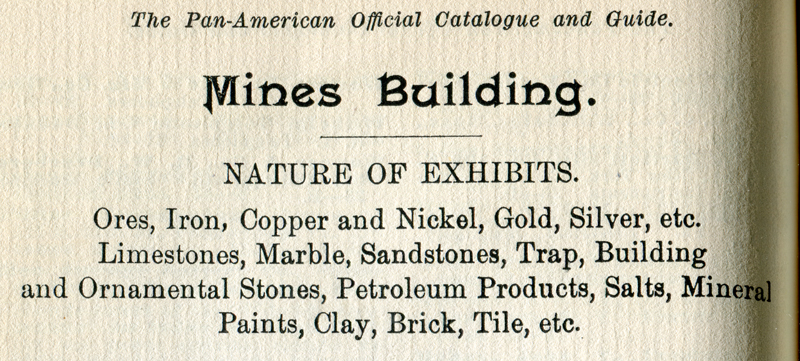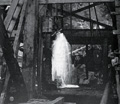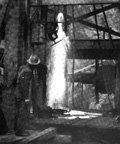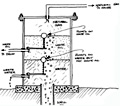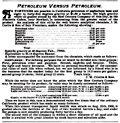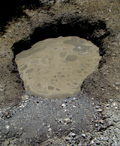|
|
Placerita White Oil, Piru Oil Displayed at
1901 Pan-American Exposition (World's Fair).
By Leon Worden
| January 3, 2015.
|
Some of our local history books tell us Placerita "white oil" — so clear, you could read a newspaper through it — was a big hit at the 1876 Philadelphia Exposition. That's unfortunate, because Placerita white oil wasn't discovered until about 1899. But there's a kernel of truth in most stories that go awry over the years, and so it is with this one. They had the right idea; they just had the wrong World's Fair. Placerita white oil was displayed at the 1901 Pan-American Exposition in Buffalo, N.Y., aka the 1901 World's Fair. That's the one where, on Sept. 6, President William McKinley was mortally wounded by the anarchist assassin, Leon Czolgosz. We know the strange stuff from Placerita was displayed there because the New Century Oil Co. was one of the exhibitors. The New Century company was organized to produce petroleum at Placerita. It held a claim to the little white oil field — located along the present-day Canyon Trail in Placerita Canyon State Park — and spudded five wells there, although only its first one, New Century No. 1, proved a real success. It gushed white on Aug. 25, 1900, and kept producing for several years. (It wasn't the discovery well; that distinction went to another company, Freeman & Nelson, about 100 feet up an adjacent hillside.) The timing of the drilling might explain why New Century apparently was a late-comer to the Pan-American Exposition. There were at least three versions of the "Official Catalogue and Guide" to the exposition, a 5x7-inch softcover volume published by Charles Ahrhart of Buffalo and priced at 25 cents. (If only he could have envisioned today's value of his full-color, fold-out maps.) One version, likely the first, is just 48 pages and probably doesn't list exhibitors. A second version is 176 pages and includes exhibitors. We learned the hard way that New Century Oil Co. isn't listed there. But New Century does appear in the final(?), 224-page version, where it's listed as an exhibitor in the Mines Building. Just like the men who extracted gold from the ground, the men who extracted black (or white) gold from the ground were called "miners" back then. So the Mines Building showcased a wide variety of "ores, iron, copper and nickel, gold, silver, etc.; limestones, marble, sandstones, trap [basalt], building and ornamental stones, petroleum products, salts, mineral paints, clay, brick, tile, etc." Most exhibitors hailed from the East Coast of the United States and Canada, but by the time the 6-month-long fair got underway May 1, Nevada and Oregon were well represented in the Mines Building. A paltry 22 of the more than 900 mining exhibitors hailed from the Golden State, including the California State Mining Bureau, U.C. Berkeley and the San Diego Chamber of Commerce — but New Century Oil wasn't the only one from the Santa Clarita Valley. The Piru Oil & Mining Co. was also there — and incidentally it signed on sooner than New Century because it made it into the intermediate, 176-page version of the catalog, even though it, too, got its start around 1899. W.W. Neuer was the head of the Piru company, and his better-established Central Oil Co., operating in the Whittier oil field, was an exhibitor, as well. (Note that the name appears as "Piru Oil & Land Co." in this story in a 1900 edition of Charles Lummis' "Land of Sunshine" magazine.) Alphabetically, the California exhibitors in the Mines Building were: • The Alcatraz Company of Los Angeles: Refined asphalt. • American Asphalt Co. of Los Angeles. • Banning, Hancock of Los Angeles: Serpentine marble. • California: Collective exhibit of ores from the State Mining Bureau, San Francisco, A.L. Cooper, state mineralogist. • Central Oil Co. of Los Angeles: Crude oils. [Whittier field.] • Easton, Eldridge & Co. of Los Angeles: Crude oils. • Franklin Refining Co. of Los Angeles: Oil and mineral exhibit. • Home Oil Co. of Whittier: Crude oil. • Loma Blanca Lithographic Stone Co. of Los Angeles: Lithographic stone. • J.H. McKnight of Corona: Glass sand. • New Century Oil Co. of Los Angeles: Crude oil. [Placerita field.] • Piru Oil & Mining Co. of Piru: Crude oils. • Puenta Oil Co. of Los Angeles: Models of oil wells. • Puerite Oil Co. of Calif.: Model oil wells. • The Rex Oil Co. of Los Angeles: Crude oil. • H.M. Russell of Los Angeles: Gold quartz. • San Diego Chamber of Commerce: Lipidolite, lithia and mica. • Southwest Miners Assn. of Los Angeles: Specimens of gold, silver, lead and copper ores. • E.L. Swayne of Los Angeles: Crystal salt. • University of California, Berkeley: Publications. • Yucca Mfg. Co. of Los Angeles: Aslphalt. • Yukon Oil Co. of Los Angeles: Crude oils. If 900-plus exhibitors in the Mines Building seem like a lot, consider that there were 18 main buildings and dozens of outdoor exhibit spaces, and the Mines Building wasn't one of the bigger ones. One day we'll have to inspect the lists of exhibitors in the other buildings.
|
The site owner makes no assertions as to ownership of any original copyrights to digitized images. However, these images are intended for Personal or Research use only. Any other kind of use, including but not limited to commercial or scholarly publication in any medium or format, public exhibition, or use online or in a web site, may be subject to additional restrictions including but not limited to the copyrights held by parties other than the site owner. USERS ARE SOLELY RESPONSIBLE for determining the existence of such rights and for obtaining any permissions and/or paying associated fees necessary for the proposed use.
